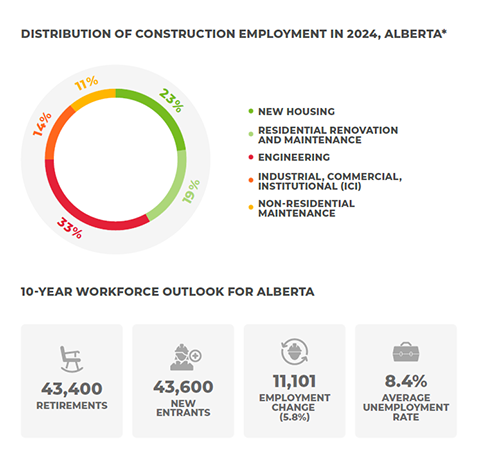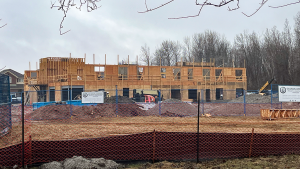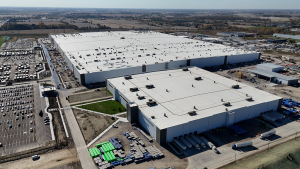According to BuildForce Canada, Alberta is poised for growth across both the residential and non-residential sectors and benefits from a younger population to help tackle labour issues that may arise when it comes to getting projects built.
The association has released its 2025–2034 Construction and Maintenance Looking Forward report for the province, which states the sector experienced growth in 2024, with notable increases in residential across all three sub-components: new housing, renovations and residential maintenance. Activity in the non-residential sector also expanded, driven by growth in the construction of ICI buildings.
Looking ahead the outlook calls for employment to grow in both sectors, with residential expected to benefit initially from new housing as interest rate cuts boost demand.

Although growth slows in later years, the sector is driven by strong demand for residential renovations and maintenance activity. As a result, residential employment is projected to reach a peak of eight per cent above 2024 levels by 2026 before ending the decade at near-2024 levels.
Non-residential investment is projected to remain stable through to 2029. Across this period, work on several major engineering-construction projects either concludes or passes peak activity levels, the report notes. Offsetting this trend is increased levels in ICI building construction. These factors combine to increase employment by nine per cent above 2024 levels by 2034.
“Although employment demands are expected to increase in Alberta across the forecast period, the province continues to benefit from a population that is younger than the national average,” says Bill Ferreira, executive director of BuildForce Canada. “That fact should help the construction sector recruit from local sources a significant proportion of those workers who are projected to retire by 2034.”
The province’s construction industry will need to recruit an estimated 59,000 workers over the forecast period, driven largely by the expected retirement of 43,400 workers. The younger demographic will close much of the gap, with 43,600 first-time new entrants from the local population and who are under the age of 30 projected to enter the labour force.
“However, when hiring needs relating to expansion are factored into the scenario, the province could be left with a recruiting gap of 15,400 additional workers to be filled by 2034,” the report concludes.
It should be noted the investment trends and employment projections by BuildForce were developed with industry input prior to the emergence of potential trade tensions between Canada and the United States.
The forecast does not take into account the possible impacts of tariffs.











Recent Comments